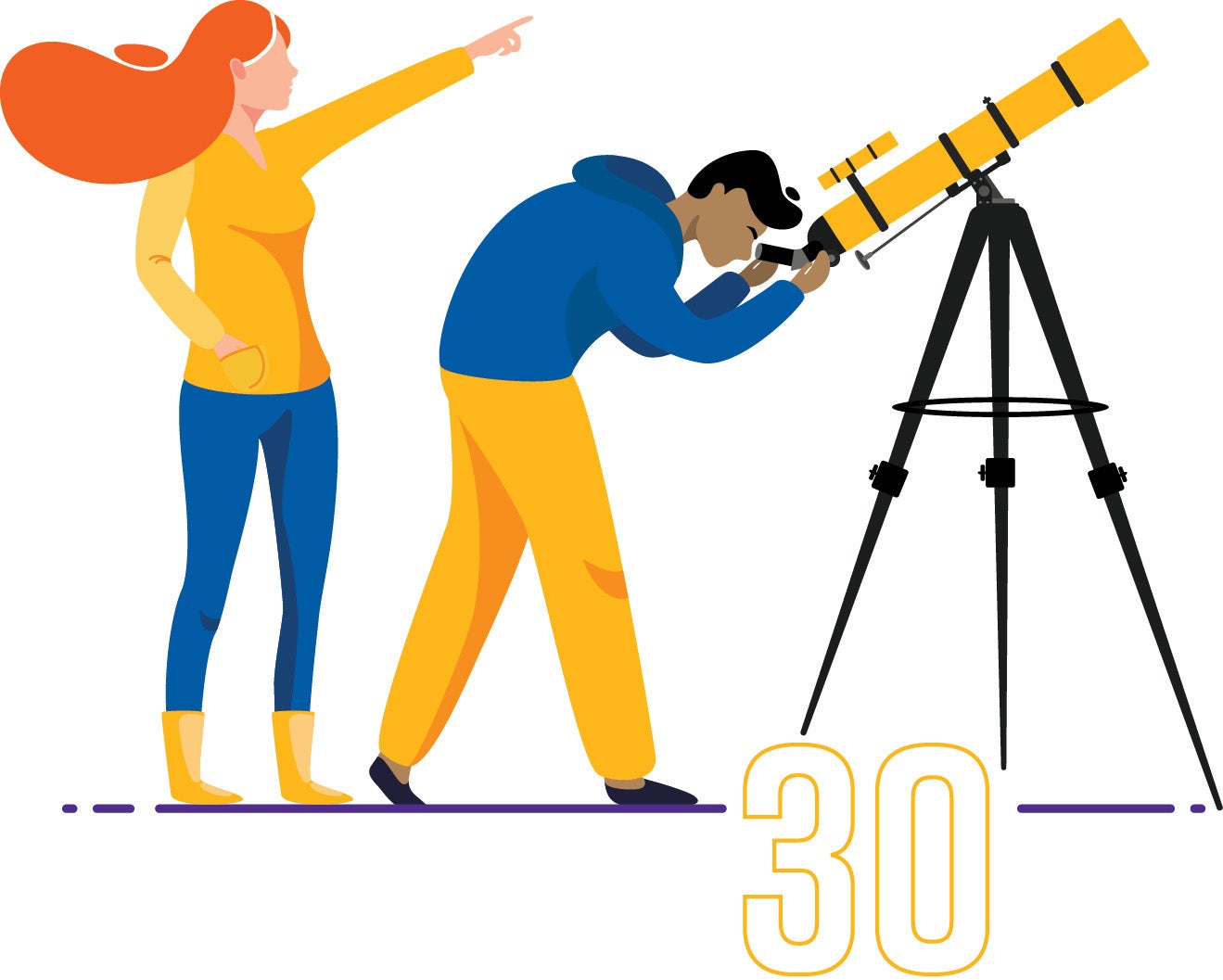BY THE NUMBERS
PLANET HUNTING
By Jules Bernstein
Earth and other small, rocky planets in our solar system reside closer to the sun, while giant planets like Jupiter and Saturn sit farther away. To find out whether this planetary configuration is similar in other solar systems, the California Legacy Survey aimed telescopes at the brightest stars in the Northern Hemisphere. Using the W.M. Keck Observatory in Waimea, Hawaii, and the Lick Observatory in San Jose, California, UC Riverside astrophysicist Stephen Kane and other researchers tried to locate giant planets by catching them in orbit around their stars. Here is a closer look at the project:
is the number of years Kane has served as a collaborator on the project. He is also involved in a similar survey of stars in the Southern Hemisphere with the MINERVA-Australis observatory at the University of Southern Queensland in Australia.
years is how long the project team has been searching for giant exoplanets, or planets not in our solar system. That makes it the longest running survey of its kind. Thirty is also the number of years it takes for Saturn to orbit the sun. Whereas Earth’s orbit takes only a year, larger planets like Saturn can take decades. It was important for this project to run as long as it did since scientists must “catch” giant planets as they pass by their stars. It is tougher to find them using other methods.
sun-like stars have been observed by the survey telescopes. By watching them, researchers have found 177 planets, some of which have 20 times the mass of Jupiter.
miles is the approximate distance between Earth and the sun. This distance is known as an astronomical unit, or AU. Jupiter, which has a mass two-and-a-half times larger than all other planets in our solar system combined, is roughly 5 AU from the sun. Saturn, which is only slightly smaller than Jupiter, is about 10 AU away. The survey found that the majority of giant exoplanets fall between 1 and 10 AU from their host stars. “This tells us that yes, solar systems like ours are fairly normal,” said Kane, a professor of planetary astrophysics. “It’s rare to find giant planets more than 10 AU away from their stars.”



